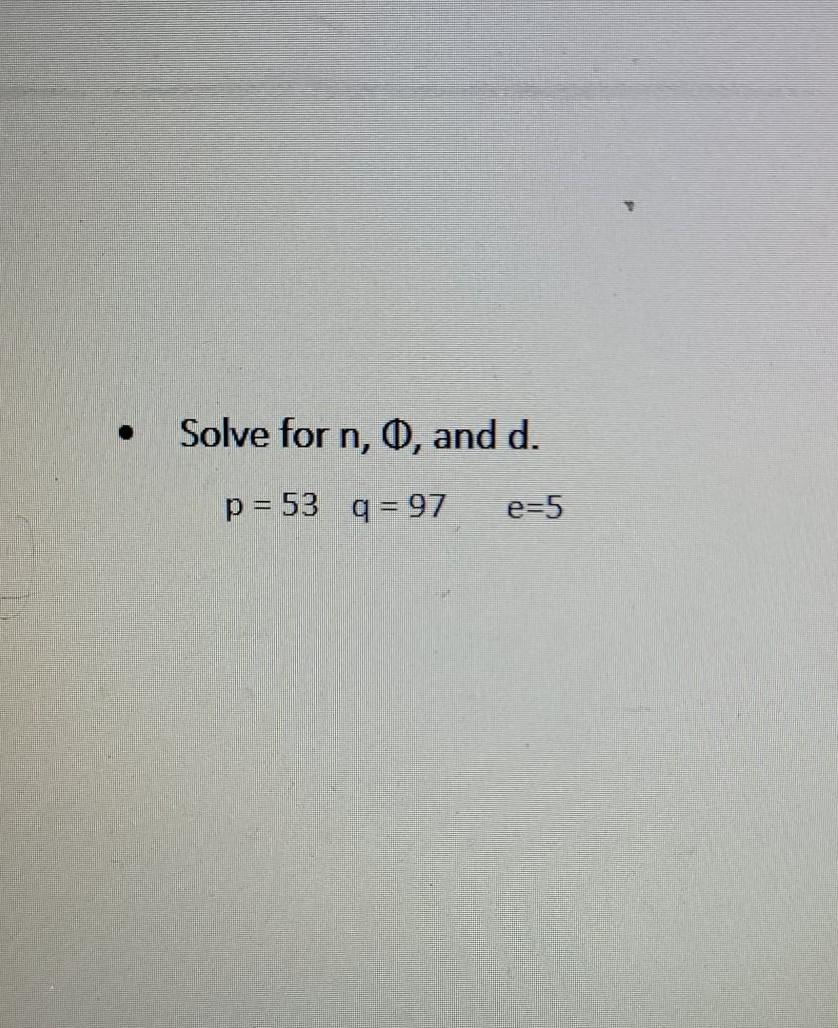Answered step by step
Verified Expert Solution
Question
1 Approved Answer
Please I need help on this. I using modulo math for the solution. This is encryption assignment. This is a sample on how to proceed.

Please I need help on this. I using modulo math for the solution. This is encryption assignment.

This is a sample on how to proceed. I tried myself but I am having issue with it.
Solve for n, 0, and d. p = 53 q = 97 e=5 1 Public key: e and n Private key:d m= 42 (message or PT) 5 Now let's add in some values and run through an example (this is the part where you really need to pay attention!). I am going to start off by giving you all the values in the equation. Multiply the result of divided by e (5) by the second row (7 and 1): 40 40 57=35 5+1=5 p=61,4 = 53, e=17 n=3233, d=2753 Since we know the formulas for encrypting and decrypting, let's plug the numbers in. You can use either the scientific mode on your calculator, or Wolfram Alpha: Subtract results (35, 5) from 0 (top row): 40 40 7 1 (40-35=5 ) (40-5=35) Encrypt:m mod n=c Decrypt: mod n=m 4217 mod 3233 = 2557 (our encrypted value) 2557275 mod 3233 = 42 (decrypted value) How do you calculate p, q, e, n,d? 3 steps: Write results under original second row (7 and 1), and remove top row (40): 7 1 5 35 1. choose 2 large prime numbers 2. calculate (phi) B. choose exponents e and a 1. p and q are primes. How large should they be? In the example of 4,096 bits, pq=n (which is 4096); so the product of p and must be at least that (to meet the standard). Current recommendation is that n is at least 4096. Start this process again (we are trying to get to the left number to "1"): 7 1 15 35 1 (5 goes into 7 once) 2.0 (phi) is a math quotient that stands for the Euler totient function. We need to find to where any number raised to 0 mod n=1 0 =(p-1)(q-1) O also must not share a factor with e Multiply this result (1) by 5 and 35: 7 1 1.5=5 1.35=35 3. Choose e and d. You can choose a small e, that is more than 2. A commonly used value is 3. To find d, we need to calculate the inverse of e mod 0 = d (ored mod 0 = 1). We use Euclid to do this. Subtract results (35, 5) from top row: 7 1 5 35 (7-5=2) (1-35=-34) D Let's play with some numbers (Ready?): Start with p, q, and e: We can calculate n, since we have p and a We can also solve for : We have e, so let's solve ford: p=5, 9 = 11, e = 7 n= p q = 5'11 = 55 0 = (p-1)(0-1) = (4) (10) = 40 end mod = 1 . Write results under 5 and 35, and remove top row (40): 5 35 2 -34Step by Step Solution
There are 3 Steps involved in it
Step: 1

Get Instant Access to Expert-Tailored Solutions
See step-by-step solutions with expert insights and AI powered tools for academic success
Step: 2

Step: 3

Ace Your Homework with AI
Get the answers you need in no time with our AI-driven, step-by-step assistance
Get Started


